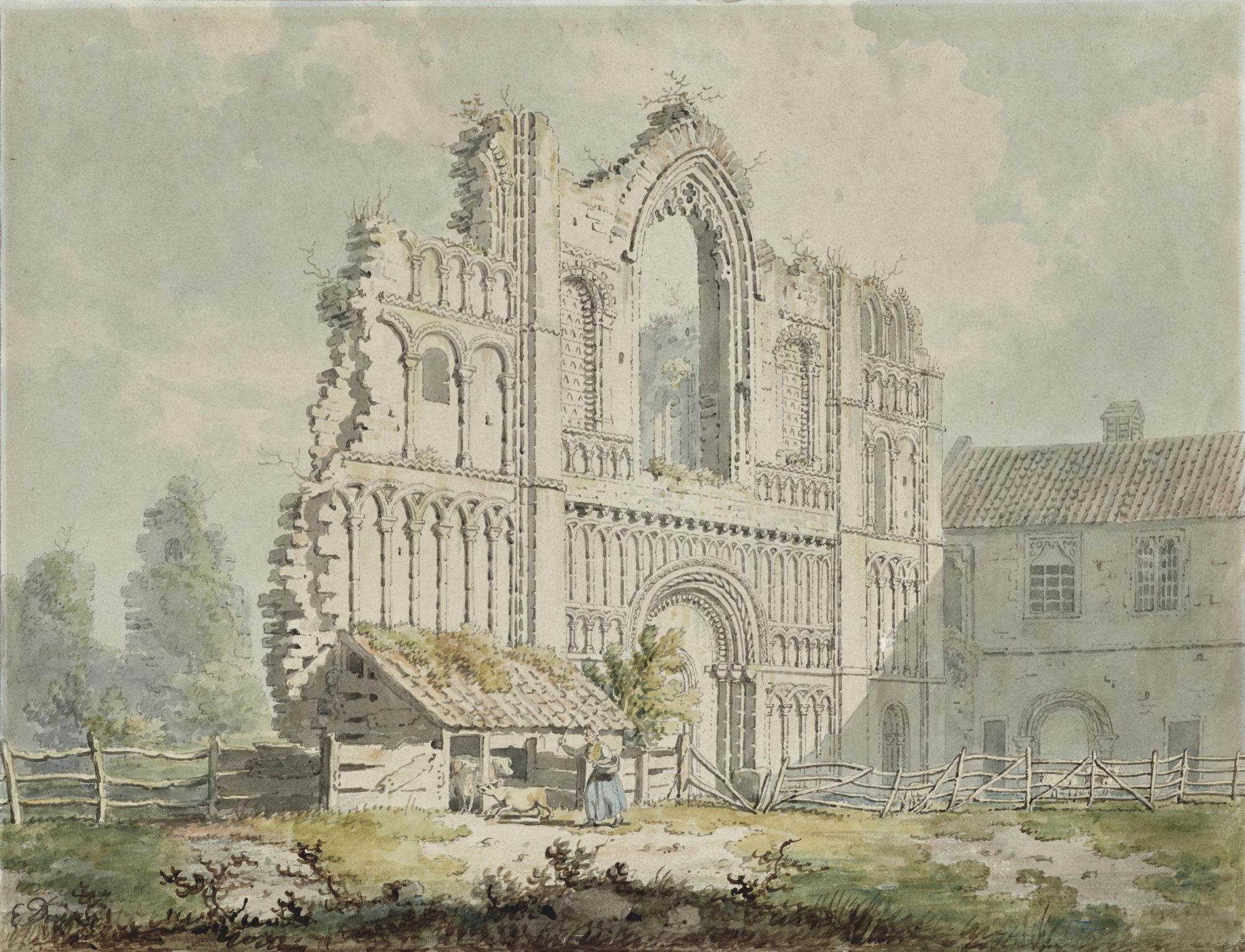Castle Acre Priory, Norfolk
Castle Acre Priory, Norfolk
Edward Dayes (1763-1804)
Castle Acre Priory, Norfolk
Signed lower left: E Dayes and inscribed on old mount: Castle Acre Priory, Norfolk - by EDayes from a sketch of Ja.S Moore Esq.
Watercolour over pencil with original washline border
Image 22.9 by 29.9 cm., 9 by 11 ¾ in.
Provenance:
Private Collection, London
James Moore (1762-1799), an amateur artist and antiquarian, employed several professional artists including Edward Dayes, to either produce finished watercolours and prints, based on his on-the-spot studies, or to occasionally improve and finish Moore's actual sketches. Many of the resulting watercolours were published in Copperplate Magazine and in Moore's own publications including, A List of the Abbies, Priories and other Religious Houses, Castles, etc. in England and Wales, first published 1786, as well as Monastic Remains and Ancient Castles in England and Wales, drawn on the spot by James Moore, 1792.
Castle Acre Priory was built from about the late 11th to the early 13th Century, on land granted to the Cluniac monks in 1089 by William II de Warenne. Further alterations and improvements continued until the Dissolution of the Monasteries closed the Priory in 1537. The property became part of the Duke of Norfolk's lands who sold it to Sir Thomas Gresham, who in turn sold it to the lawyer and politician Sir Edward Coke in 1615 in whose family it has descended until today. During the 18th Century it became a popular tourist spot, with antiquarians, tourists, locals and artists keen to visit and capture the picturesque ruins. John Sell Cotman spent four days drawing at Castle Acre.

